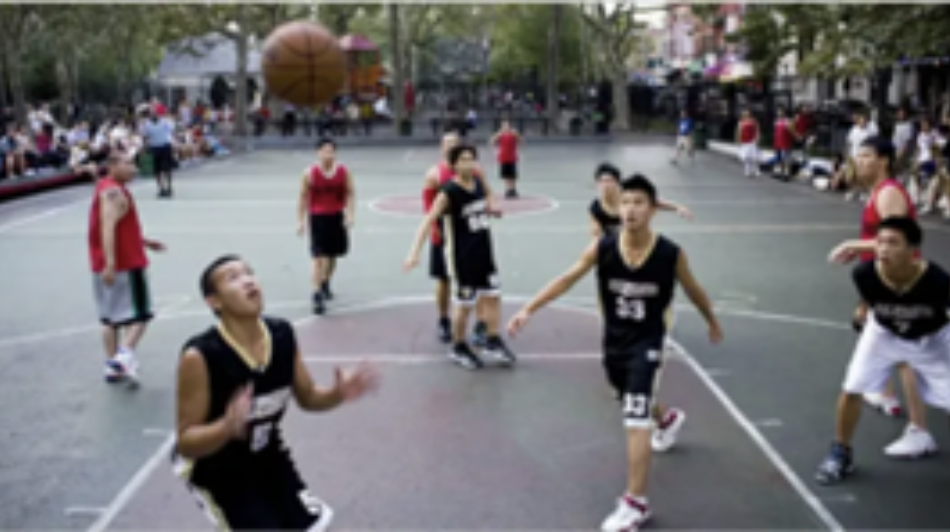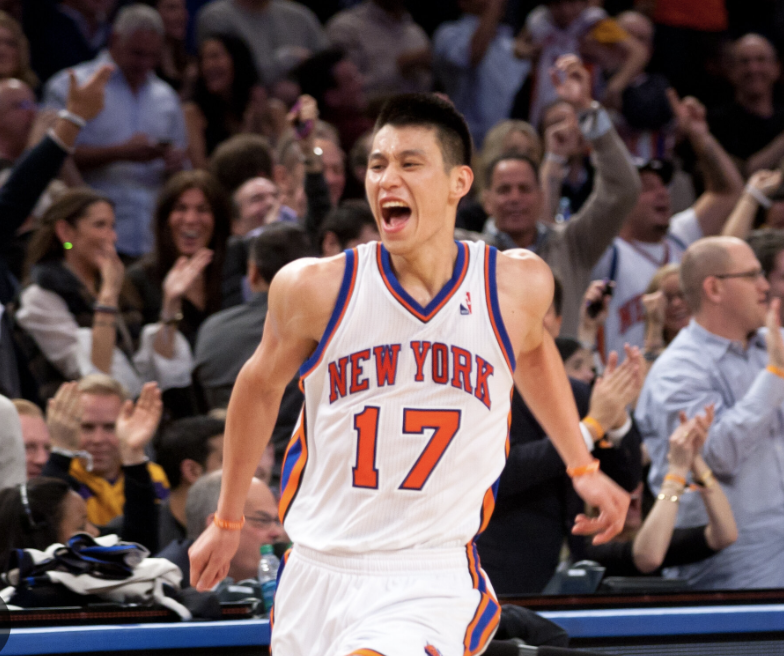Why Aren’t Asians Athletic?
Ming Qin is the Director of Resources and a rising junior at Choate Rosemary Hall in Wallingford, Connecticut.
Of all the deities in the Asian religions, a god of sports doesn’t exist.
In the realm of sports, Asian Americans have often been subject to a pervasive stereotype suggesting a lack of athleticism. While not universally held, this stereotype has persisted through time, starting from the first wave of Asian immigration to the US in 1965 to the 21st century, when social justice movements have become increasingly influential.
In 2019-2020, the last full academic year before the pandemic, 38% of Asian American and Pacific Islander youth (ages 13-17) played sports regularly, less than the 42% of white youth, 42% of black youth, and 40% of Hispanic youth who did. Furthermore, college athletics and professional league statistics reveal even more substantial disparities. In 2019-2020, players of Asian descent made up only 0.7% of NCAA D1 women’s basketball players, 0.4% of D1 men’s basketball players, and 0.3% of D1 football players. For professional leagues, players of Asian descent made up just 0.4% of NBA players, 0.1% of NFL players, and a stunning 0% of WNBA players. That year, more than 20 million people of Asian descent comprised around 6% of the US population. The figures don’t add up; relative to the sizable Asian American population, the extreme rarity of Asian American athletes seems disproportionate.
Why, then, is this the case? Does this stereotype actually hold credibility? How did we get here, and more importantly, how do we fix this issue?
Stereotypes and the “Model Minority Myth”
Long-standing racial stereotypes and cultural phenomenons such as the model minority myth, further reinforced by pop culture, box Asian Americans into predetermined roles: the math genius, the computer wiz, but never the athlete.
Christina Chin, a professor of sociology at Cal State Fullerton, believed that in the context of day to day life, Asian Americans have been emasculated. “Asian males, in particular, were feminized,” Chin said. Chin remarked that, for as long as Asian Americans have been around, Asian American men have been deprived of their masculinity by other Americans; historically and contemporarily, they have often been perceived by peers as smaller and weaker.
To some, seeing an Asian face is enough to inspire skepticism about athletic ability. In particular, the effects are amplified for high-octane, contact-heavy sports typically tagged as “masculine,” such as American football, ice hockey, and lacrosse.
Adding to that are the complexities of immigration and the unintended byproduct, the model minority myth. According to sociologist Phillip Kasinitz, the model minority myth is a negative social phenomenon that refers to “minority groups that have ostensibly achieved a high level of success in contemporary US society.” According to Kasinitz, it appears to many Americans that with high incomes and high education rates, Asian Americans are genetically suited for “brain work,” such as math or coding.
“And because these racial meanings were placed upon Asians, people then assumed they couldn’t do anything other than be good at math,” said Constancio Arnaldo, a professor of Asian American studies at UNLV. “And those meanings then travel into sporting realms.”
In mainstream American film culture, portrayals of Asian characters are also prone to stereotypes, oftentimes the same stereotypes that plague real Asian Americans in day-to-day life. The “nerdy Asian” was partly a byproduct of persistent film stereotypes. Typically, any East Asian character in Western media who isn’t a martial artist (look to any Bruce Lee role) or a downright villain (look to the infamous Fu Manchu) is extremely intelligent or geeky. Besides other long-standing bad habits, such as racially interchangeable casting and stereotypical physical portrayals of Asian roles, Hollywood tends to create Asian characters stereotyped as “nerds,” the awkward side characters with plain features and an average build, usually wearing a pair of glasses or other stereotypically nerdy attire.
Familial Pressure and Fixed Mindsets
Additionally, common insecurities and worries among immigrant families, such as high academic expectations, led many Asian American parents to reduce the priority of sports in raising their children. This is especially true in first-generation immigrants. In a statistical analysis by Aspen Institute, researchers remarked that “during COVID-19, white youth have spent 174% more time playing [sports and athletic games] than Asian youth.”
Education data for Asian Americans, on the other hand, present a very different story. “More than half of Asians ages 25 and older (54%) have a bachelor’s degree or more education, compared with 33% of the U.S. population in the same age range. Similar shares of U.S.-born (55%) and foreign-born Asians (54%) have earned a college degree. Both figures are substantially higher than the share of all U.S.-born people and all U.S. immigrants with a college degree (32% each),” said research analysts Abby Budiman and Neil Ruiz of the Pew Research Center in their 2021 report on common demographic and economic characteristics of Asian Americans. Clearly, the emphasis on education is much heavier in Asian American households compared to athletics.
In an interview with the New York Times, Tom Law, a second-generation Chinese American immigrant who founded an Asian American youth basketball organization, reflected on the mentality he observed in many Asian American parents. Law said that the primary goal of many recent immigrants “is to get out of this seamstress-restaurant prison,” and they attach their aspirations to their children. “If your child comes home and says, ‘I want to play basketball,’ what’s your response?” Law said. “No way! You have to stay in school and become a doctor! I don’t want anything that will derail you from that goal.”
The academic pressure for children from immigrant families is intense, especially in families who arrived on the lower end of the socioeconomic ladder. Additionally, while some members of other ethnic groups have embraced sports as a way out of poverty, Asian Americans, for the most part, have not. Peter Kwong, a professor of Asian American studies at Hunter College, commented on the lesser prestige of athletic work in Asian culture in his interview with The New York Times: “Using physical strength to make a living is not respected; it’s a Confucian ideal,” Dr. Kwong adds. “You’re wasting your mind. Using your hands is just not a career.”
Education is the safe bet; sports pose risks. Given the statistical reality that Asian Americans tend to participate in sports less than other races, there may be some truth behind the stereotype. So which came first, the chicken or the egg? In this case, it's not that less Asian Americans play sports because they aren’t good, it’s that Asian Americans aren’t “better at sports” because they play less. That said, this notion only holds credibility because it is a self-perpetuating myth; to a large extent, expectations in Asian families, not just the public, sustain and realize the stereotype that Asians aren’t athletic.
Reversing the Cycle
To come full circle, why aren’t Asians athletic?
That question is a false proposition in itself. Asians are athletic. Asians are just as athletic, just as confident, and just as capable as anyone else in the world.
While there is still a long way to go to debunk this stereotype completely, everyone holds a share of responsibility and power. And as those inspired become those who inspire, the vicious cycle begins to spin in the other direction, gradually bridging the gaps that have existed for so long.
Asian Americans everywhere should celebrate their identity and diversity while engaging in athletics, not only for the numerous health advantages, social benefits, and unique possibilities of sports participation. Embracing diversity not only enhances the vibrancy and richness of sports communities, but also moves the greater society closer to achieving equity, inclusion, and justice.
The next Jeremy Lin and Larry Kwong are among us in plain sight, waiting for the spark that will take them to the highest stages. With enough time and effort, the collective success of Asian Americans around the country can rewrite the most persistent historical narratives and uproot the most unyielding traditions.



